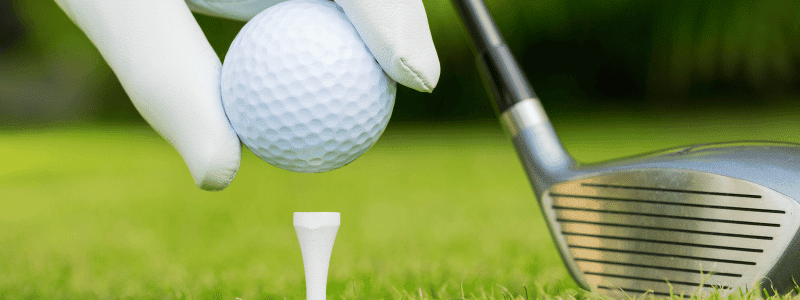Tee Height in Golf: Unleashing the Power of Precision
In the game of golf, seemingly small adjustments can have a significant impact on your performance. One such adjustment that often goes overlooked is the height at which you tee the ball. While it may appear inconsequential, tee height can influence the trajectory, distance, and accuracy of your shots. Understanding and optimizing tee height can unlock the true potential of your swing. In this article, we will explore the differences in tee height and how it affects your game.
- The Basic Rule of Thumb: As a general guideline, the ideal tee height for drivers and fairway woods is to have approximately half the ball above the crown of the clubhead at address. This ensures that you strike the ball with the sweet spot of the clubface, promoting optimal launch conditions and maximizing distance. However, it’s important to remember that individual swing characteristics and personal preferences can vary, so experimentation is key to finding the tee height that suits you best.
- Tee Height and Launch Angle: Tee height significantly influences the launch angle of your shots. A higher tee height generally leads to a higher launch angle, which can be beneficial when trying to carry hazards or achieve more distance. On the other hand, a lower tee height promotes a lower launch angle, which can be advantageous in windy conditions or when trying to control the trajectory of your shots.
- Tee Height and Spin: The height at which you tee the ball can also influence the amount of backspin or sidespin generated upon impact. Higher tee heights tend to produce slightly more backspin, which can help shots hold the green on approach shots. Conversely, lower tee heights can reduce backspin and promote a more penetrating ball flight, ideal for maximizing distance off the tee or when dealing with strong headwinds.
- Club Selection and Tee Height: Different clubs require different tee heights due to their varying loft and design. For drivers and fairway woods, the general guideline mentioned earlier works well. However, for irons, hybrids, and shorter clubs, it is recommended to tee the ball slightly lower. This allows for a more controlled ball flight and enables better contact with the clubface.
- Adjusting Tee Height for Desired Shot Shape: Tee height can also be used strategically to encourage specific shot shapes. For example, if you want to hit a higher fade or draw, adjusting the tee height slightly can help. Experiment with different tee heights to find the balance that allows you to shape shots effectively while maintaining control and consistency.
- Personalization and Experimentation: Every golfer is unique, and what works for one player may not work for another. Tee height is a personal preference, and it’s crucial to experiment and find the tee height that complements your swing and optimizes your performance. Take note of the launch angle, spin rate, and ball flight characteristics with different tee heights during practice sessions. Over time, you’ll discover the tee height that suits your swing mechanics, equipment, and desired shot outcomes.
Conclusion: Tee height may seem like a minor detail in the game of golf, but its impact on your shots cannot be underestimated. Optimizing tee height allows you to fine-tune your launch conditions, control ball flight, and maximize distance and accuracy. Remember to experiment with different tee heights, take note of the results, and make adjustments based on your swing characteristics and desired shot outcomes. By paying attention to this often overlooked aspect of the game, you can unlock the full potential of your swing and take your golf game to new heights.


